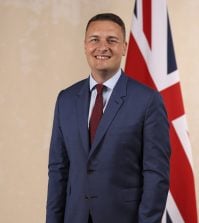UK Cabinet Office signals revival of digital spend controls

The UK government has signalled that it plans to make sign-off for departmental IT project budgets conditional on services using a new single user identity system and supporting data sharing across government, in a speech by the civil service’s chief operating officer.
Alex Chisholm, who is also permanent secretary at the Cabinet Office, was speaking at Global Government Forum’s Innovation 2020 online conference, which continues on Tuesday and is open to all public servants. In the address, he noted that responsibility for government data once again rests with the Cabinet Office and said that he’s taking steps to “strengthen the leadership to drive and deliver change”.
As part of this, Chisholm is seeking to recruit a chief digital officer to coordinate efforts across departments; a successful appointment would end a search that began in 2017 and was relaunched in August. In addition, he said, the Government Digital Service, which forms part of the Cabinet Office, is working to appoint a new chief executive officer. The priority for this role “will be overseeing from the centre the development and delivery of high-quality digital tech and platforms for use by individual departments”.
The new leadership structure, Chisholm continued, will create a “new system of controls in which technical sign-off is tightly integrated with financial approval [and] that scarce resources are directed to strategic priorities, like the single login and cross-government data sharing”.
He added: “We want this new structure to help us deliver on what we see as a once in a lifetime opportunity to improve the lives of many people and be a game changing force for good.”
Build on success, learn from failure
Chisholm praised the work of many government departments and agencies in the face of the COVID-19 pandemic, but admitted that “there have been things which could have been done better”. These weaknesses, he added, would inform “the ongoing reform of our digital services”.
He also identified several areas that require improvement. Firstly, Chisholm said that citizens need to be placed at the centre of services. He drew on language used by Singapore deputy secretary for transformation Teoh Zsin Woon at a recent GGF webinar to illustrate the point. Citizens, he said, “not the government, should be the sun in this universe. Services should orbit around them, not the other way around.”
He added: “We know it’s not like the private sector. Our fellow citizens are not like clients or customers – they can’t head off to a competitor citing poor customer service.”
The key to improving services, Chrisholm continued, will be rolling out the single login for all services. “There are so many ways to sign in to so many different government services, with the same data having to be entered time and time again, [which is] such a waste of time [and] not a great experience,” he said.
“With our new vision, members of the public will instead have a single sign-in, an ‘open sesame’, to any online central government service that grants simple, safe and secure access. When they have to prove their identity, it should be easily done in a way that doesn’t require them to put information in all over again.”
The UK has pursued its ‘Verify’ project, under which private companies were invited to build ID verification systems to government standards, for some years. The aim was that citizens could use their digital IDs to log into a range of government services.
But the scheme saw low take-up among both citizens and service providers. Last year, the Cabinet Office noted in its annual accounts that the programmee posed a “notable risk”; and Chisholm’s comments suggest that the government aims to find another delivery model.
The wrong kind of legacy
Chisholm added that the government needs to improve data sharing between departments, but it will need to tackle legacy IT issues. “Throughout the civil service we still grapple with some old computers and old databases, and that makes it very difficult to build shared data,” he said.
“We know that some of the systems are still incompatible. We know that much data is still held on old databases, microfiche or even paper records. And that means it’s disorganised; it can’t be shared. So we only have a patchy picture of the information we hold, and that means it’s very difficult for citizens to get the type of fast and personalised services that they expect.”
However, Chisholm was full of praise for the civil service’s digital response to the pandemic, pointing out that while services came under immense pressure, they didn’t fail. Among other departments and agencies, he noted strong performances by tax agency HM Revenue and Customs, the Department for Work and Pensions, and signals intelligence agency Government Communications Headquarters (GCHQ).
“The unprecedented explosion in demand for digital, online services put government infrastructure to the test as never before,” he said. “Some things worked really well; other things less so. On the plus side, I’m particularly proud of the impressive turn of pace we showed to scale up existing services and build new digital products, dare I say occasionally surprising ourselves.”
Chisholm also praised the work of other countries, including Israel, Canada, Germany, China, the US and New Zealand, reserving special mention for Singapore. “We’re keen to learn from the best in class capabilities of Singapore, which has been very successful, I think, in dealing with the virus and in other aspects of government,” he said.
To attend the Tuesday panel sessions at Innovation 2020 – which is open to all public servants – please register now. For more information see our agenda, which details the panel topics and lists the 40+ senior civil service leaders participating.





















